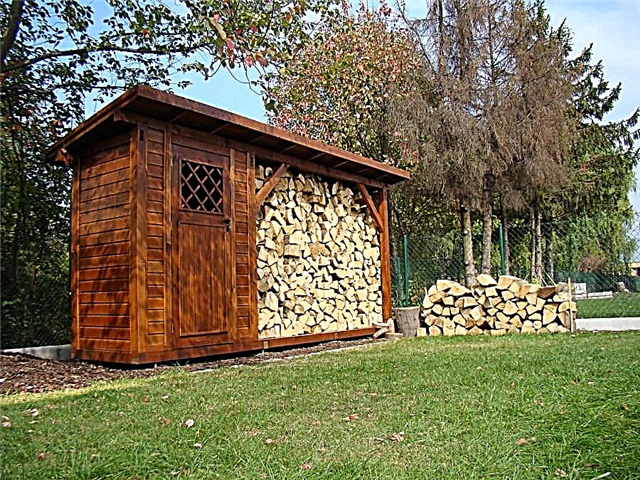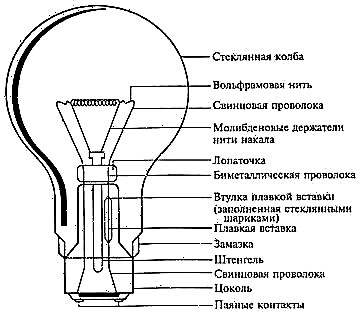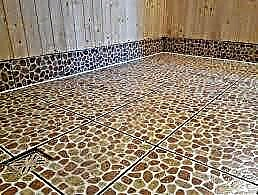Few places do not mean few ideas at all! We will show you how to turn a small plot into a delightful place to relax and give it the appearance of a respectable garden.
The secret of successful design of a small garden is competent design: come up with an interesting idea around which you can build the whole space, making maximum use of the features of the relief. It is also important to maintain all the elements in the same style and in a single color scheme - only then the general view of the site will be harmonious.
1. "Color stroke"
Plant two or three calm shades in harmony with one another in different parts of the plot. Echoes of purple bushes, as in the photo, the first in the foreground, the second in the background, visually increase the space.
Echoing purple bushes, the first in the foreground and the second in the background, visually increase the space
2. Supports for plants
Verified design option - create a perspective. Optimally, if the entire site is not visible immediately. Make sure that the beauties open gradually, when moving deeper into the garden. To do this, use special partitions: hedges, pergolas, screens.
Left: greenery-covered supports for plants, such as arches and pergolas, create vertical structures and a fancy play of shadows - the space becomes voluminous. A low hedge from boxwood also divides the site into two parts. On right: an optical illusion is created by a lattice for climbing plants, designed as if it were not flat, but voluminous.
The dimensions of absolutely all design elements, such as a flower arch, should be proportional to the size of the garden. Otherwise, there will be a feeling of disharmony. Many supporting structures for plants are sold ready-made or collapsible. You can compare offers of different online stores on our market. View a selection of arches and trellises. They help create the illusion of a large garden. After all, the path hiding around the bend is truly intriguing: you walk along it and don’t know where the borders of the garden are and what other beauties are hidden behind the bend. The following publications will help you plan garden paths and choose materials for their arrangement: Moreover, the space between the trails is occupied by plants - only a corner for relaxation remains open. Thanks to such techniques, the illusion of the scale of the garden remains. It seems that through this bizarre passage in the wall you can get into a corner surrounded by greenery. In fact, this is a very high-quality decorative poster. Not a bad idea, is it? You will find several ways to implement “optical” ideas in the article Let's Play Hide and Seek: Mirrors, Glass and Polycarbonate in Garden Design. Such a fountain from different sizes of tanks brings diversity to the garden and, due to its compact size, is suitable even for the smallest plot. In a small area you can even place a decorative pond. It is clear that the reservoir will be small, but even this will contribute to the desired optical focus. The calm expanse of water, like a mirror, reflects on its surface the sky, clouds and everything that is around the pond. Thanks to this effect, the garden seems larger than it really is. The elongated rectangular shape of the reservoir plays on the hand: this configuration visually lengthens the area. A step-by-step instruction on creating such a pond is given in the Pond material with your own hands. They look great in a small garden geometric shapes: square, rectangle and circle. Elements of such configurations bring order and clarity to the structure of the entire garden - whether it be a flower garden, terrace or pond. Narrow smooth paths and direct hedges will help to increase the garden optically. When choosing green "residents" for a small garden, give preference to low trees and shrubs. This, for example, maple Holly 'Globosum', catalpa bignoniform 'Nana' or Babylonian willow 'Umbraculifera'. Depending on the landing site, these green helpers will be able to effectively decorate the boundaries of the site or to set remarkable accents. Like, for example, the stem rose 'Schneewittchen': when it blooms, it is simply impossible to take your eyes off it. This shrub looks especially impressive at the intersection of the optical axes. It turns out a viewpoint. Another step towards the successful design of a small area. And the thing is that unusual sculptures, original pots for plants and pretty lamps attract attention, distracting from the modest size of the garden. The layout of a small site is not easy and requires certain knowledge. First, you need to decide on the list of objects that will be located on it. In addition to all of the above, a well or other technical facilities can be located on the territory. After making a list of buildings, you need to figure out how to conveniently and correctly place everything on the plan. The compilation of the plan necessarily includes the division of the territory into zones. Living sector. The area on which a residential building and a summer kitchen will be built, if necessary. The economic zone. The place in the courtyard where the outbuildings will be located: a barn, a chicken coop. 10% of the total area is allocated to the residential and utility zone. Garden and garden. This usually includes most of the territory. It may have flower beds, a greenhouse and other plantings. Relaxation area. It can accommodate a bench under a canopy, a gazebo or a table for a tea party. In addition, in this area there are playgrounds for children or for sports. The owners themselves think over the location of the zones on the plan and their sizes. If you have any difficulties, then you can use additional information. On the Internet or in magazines you can find photos of the design of a small site and get new ideas for creating your own creative solution. Before building a territory, you should correctly plan the entire space. The layout of a small site begins with the allocation of the necessary functional areas and sites in the form of a house and garage building, a utility room, a bathhouse, a playground for children’s games, recreation areas, and garden inclusions. It is not at all necessary to erect all possible objects on your site at once. Everyone chooses for himself a set of buildings necessary for a comfortable existence. Distributing the territory into zones, under the garden and garden plantings, it is necessary to allocate about 75% of the total area, about 10% for buildings. The remaining 15% of the area may be occupied by ornamental plantings of flowers and a recreation area. It is in this ratio that the design of a small garden will look organic and functional. When planning a small plot of land, you should adhere to three rules: You should not build up a small area with massive objects. To make the buildings seem light and compact, you need to skillfully hide them by planting shrubs or hedges. They should be harmoniously distributed throughout the territory in order to avoid the effect of "mass development". Deaf fences are also not suitable for erection in a small area where, due to them, a feeling of isolation and closure may arise. In addition, visually the site will seem even smaller. Blind hedges affect the microclimate of the earth, changing it for the worse, as the circulation of natural air currents is disturbed. An alternative would be a fence made from a netting-net, planted along winding seedlings, or a fence from a picket fence. Not the best solution for a small plot will be trees that grow tall. Due to the developed system of roots and shadow falling from their lush crown, the ability to decorate the territory will be beautifully reduced. Taking into account all the rules and recommendations, you should draw a plan of the site, which will display the construction sites and planting trees, shrubs, the territory reserved for beds and flower beds, as well as recreation areas and the placement of decor elements. The style of landscape design of the site can be of two types: Natural (landscape) - allows you to beat the territory in various ways. Irregularities and other defects of the site are made out in the form of a reservoir with a bridge over it or an alpine hill. You can add volume to the territory by arranging a floral arrangement with plants of different colors, shapes and heights. Direct laid tracks are not appropriate here. Regular - here the main thing is the axial composition. It is in relation to which landings will be symmetrically organized. However, this style is more suitable for large plots. The main object of construction is the house. It is in relation to it that all other elements will be further placed.
Left: Green-covered plant supports create vertical structures and a fancy play of shadows. Right: An optical illusion will be created by a lattice for climbing plants, designed as if it were not flat, but voluminous3. Winding paths - our allies
Left: The path lurking around the bend is truly intriguing.Right: There are several narrow paths leading to a secluded resting place under the trees. Two boxwood bushes marking the entrance to this zone give a special charm to this corner of the garden.4. All roads lead ... to the center of the garden
All roads lead ... to the center of the garden. Moreover, the space between the trails is occupied by plants - only a corner for relaxation remains open. Thanks to such techniques, the illusion of the scale of the garden remains8. True or false?
True or false? It seems that through this bizarre passage in the wall you can get into a corner surrounded by greenery. In fact, this is a very high-quality decorative poster.9. Portable fountain
A portable fountain from various sizes of tanks brings variety to the garden and, thanks to its compact size, is suitable even for the smallest plot13. The effect of the mirror
The calm expanse of water, like a mirror, reflects on its surface the sky, clouds and everything that is around the pond. Thanks to this effect, the garden seems larger than it really is. The elongated rectangular shape of the reservoir plays on the hand: this configuration visually lengthens the area14. Green “accents”
When the stem rose 'Schneewittchen' blooms, it is simply impossible to take your eyes off it. This shrub looks especially impressive at the intersection of the optical axes. It turns out a viewpoint
With the help of small trees with a spherical crown in the garden, you can set bright accents.15. Original elements of decor
Decor elements attract attention, distracting from the modest size of the garden
You will find examples and ideas in the materials:
Accessories only should not overload spacebecause simple clean lines always look more elegant than a pile of elaborate details.Competent planning
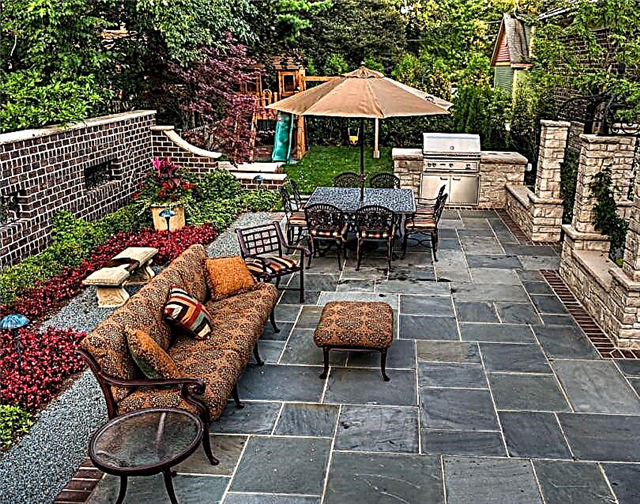
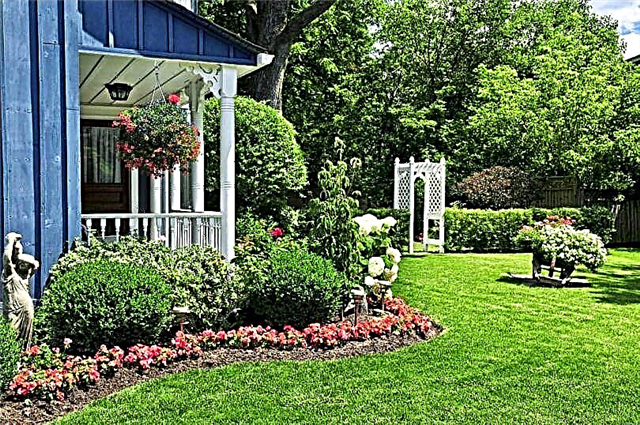
List of buildings
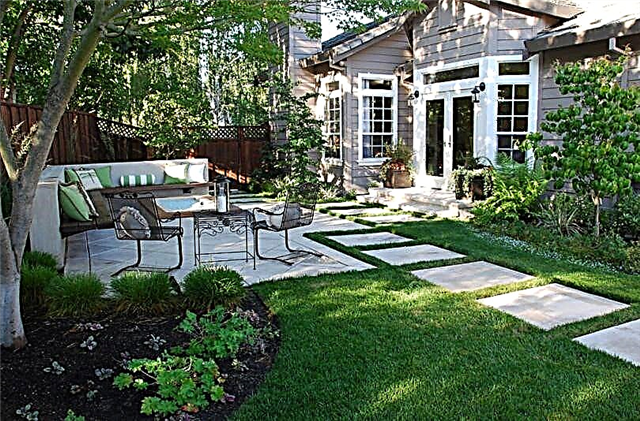
Division into zones
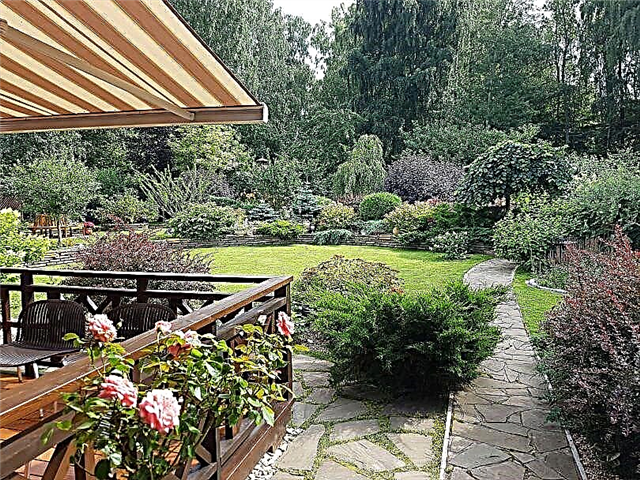

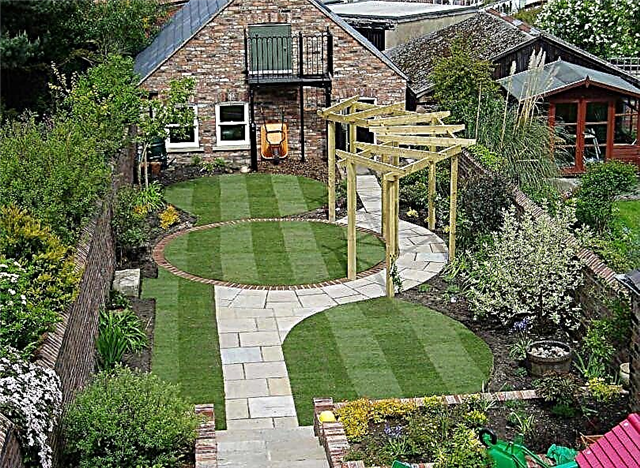
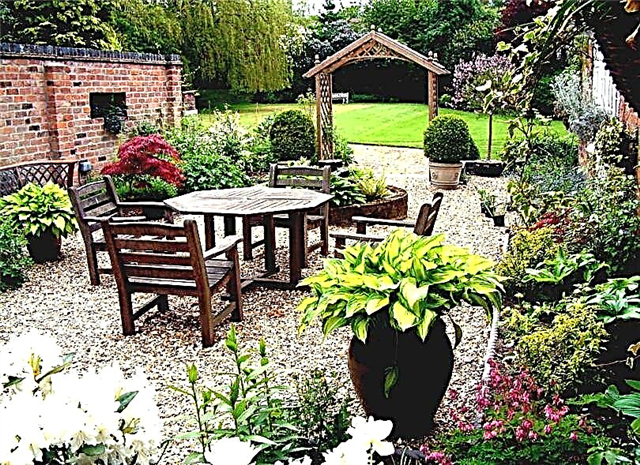
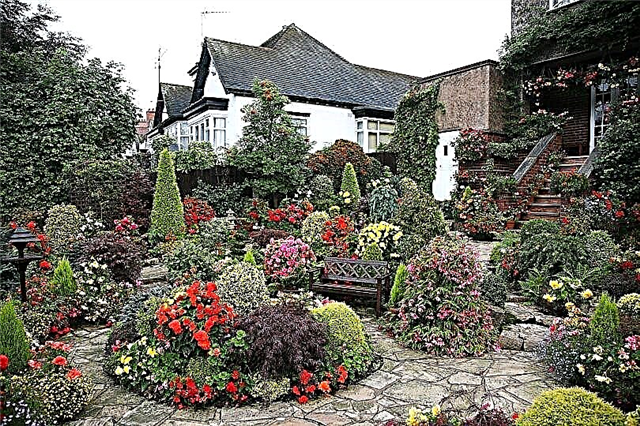
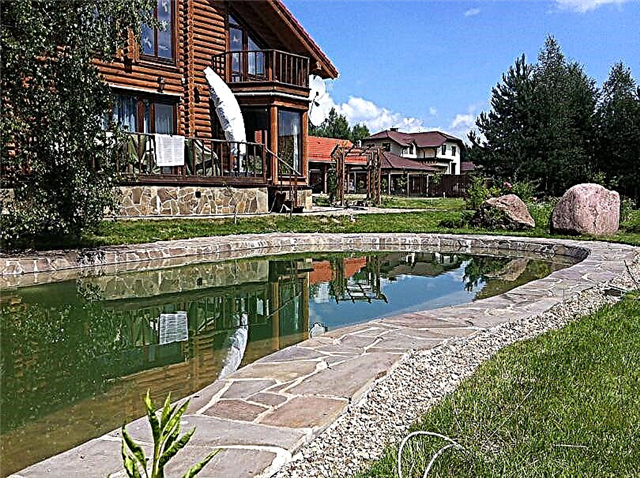
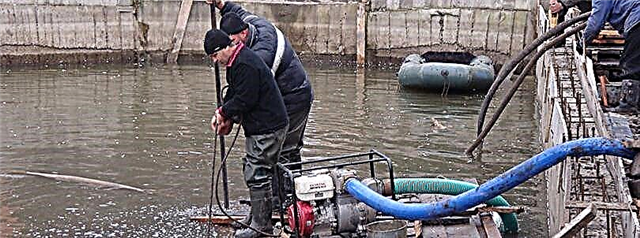
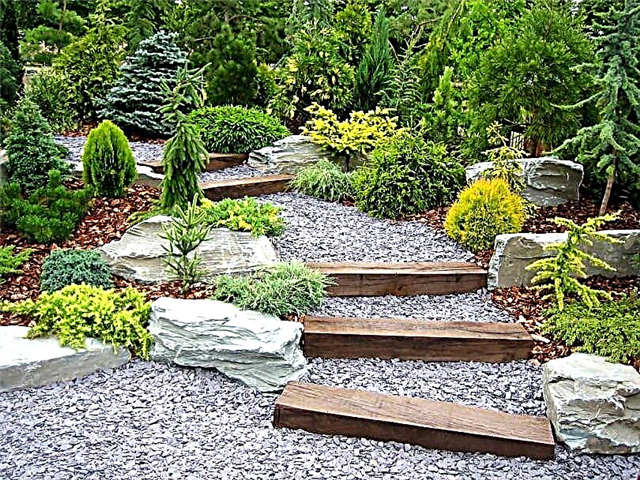
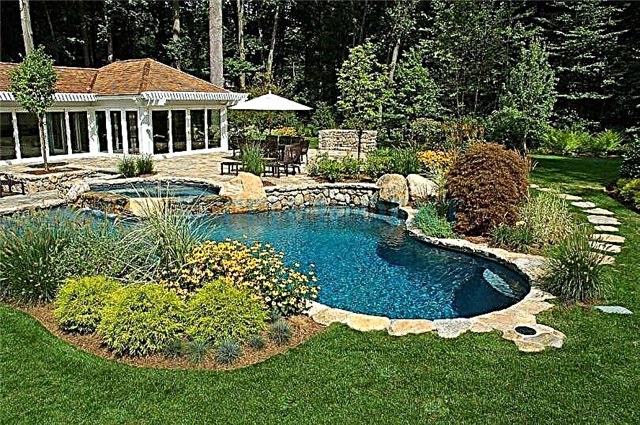
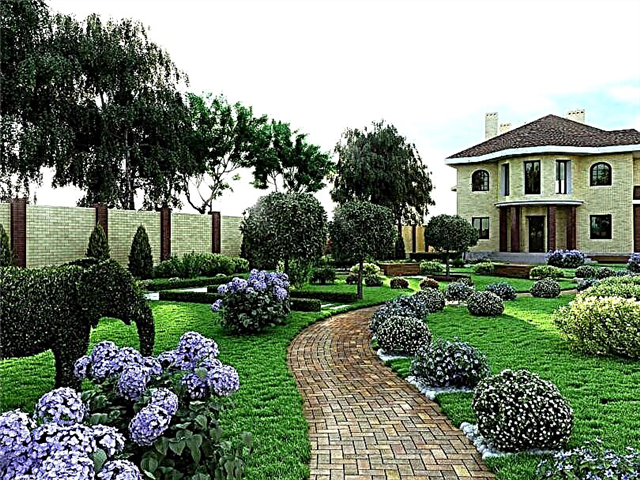
Territory planning
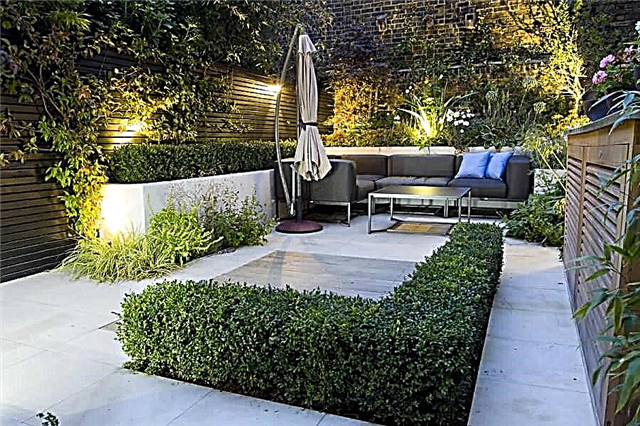
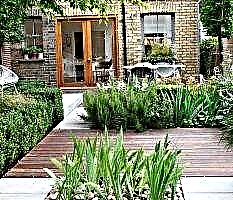
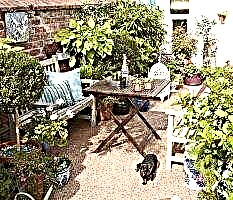

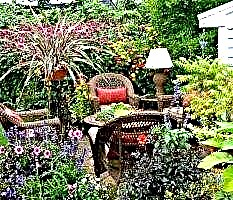
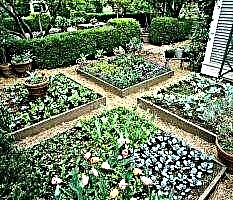
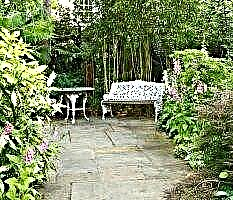
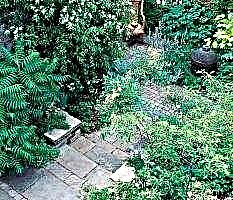
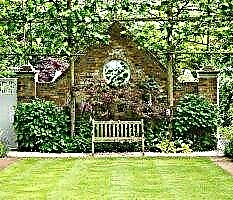
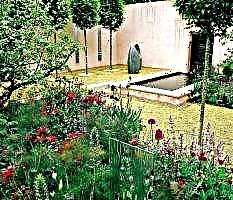

Planning Rules
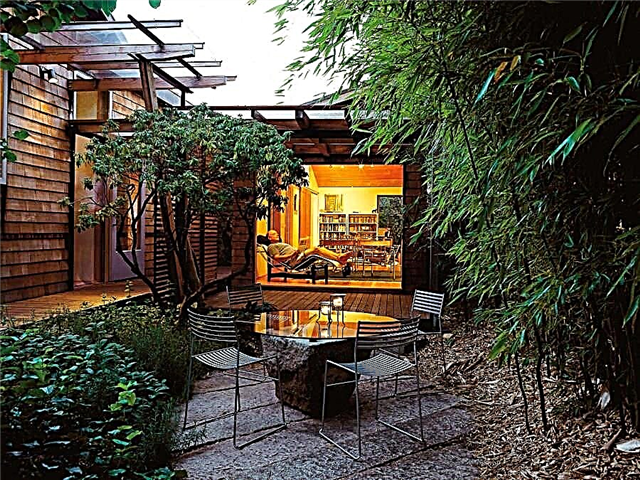
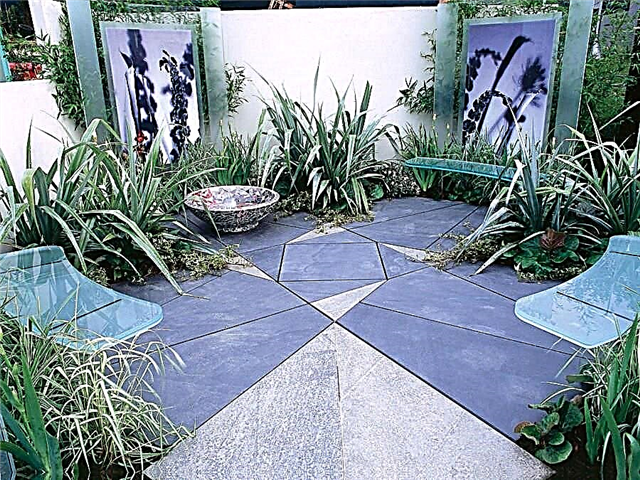
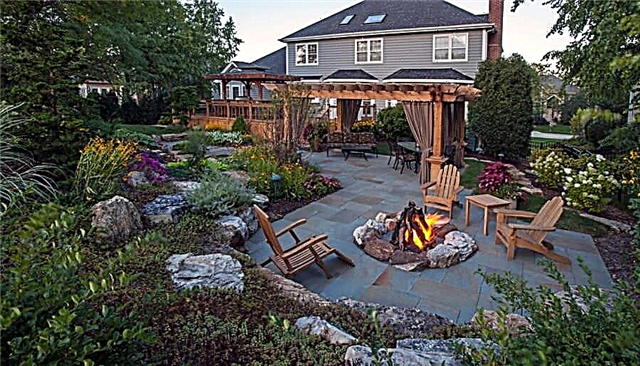
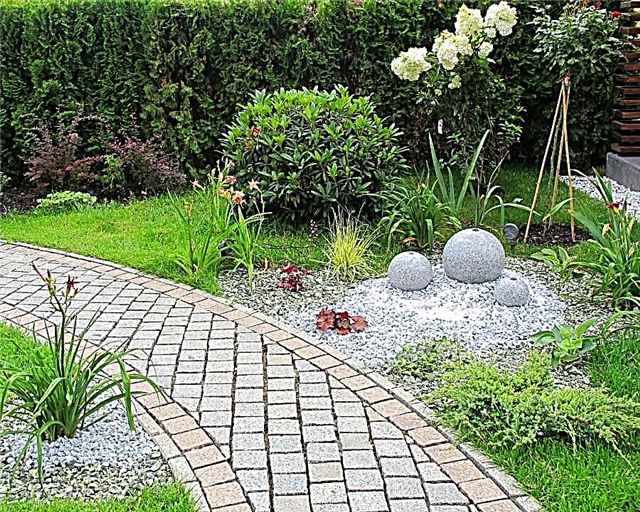
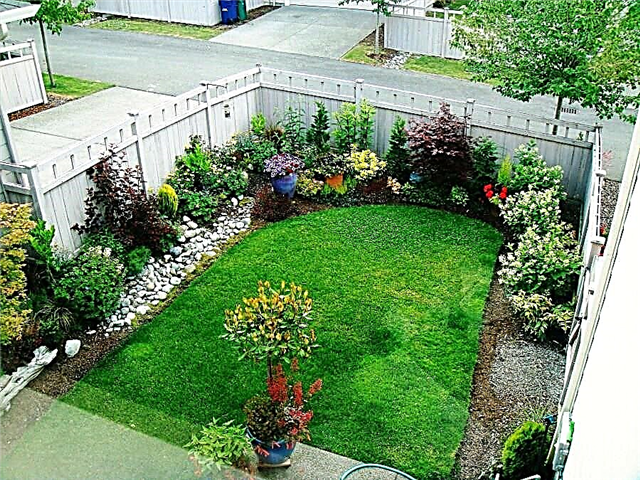
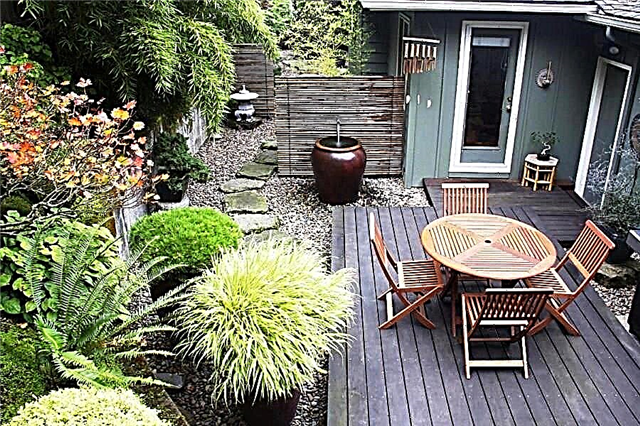
Style selection
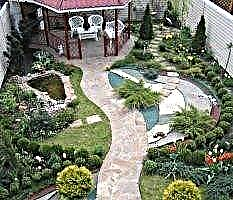
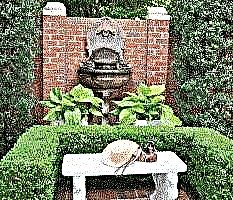
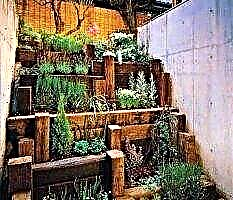
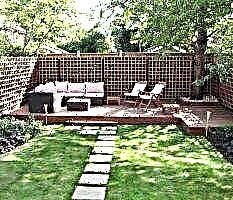
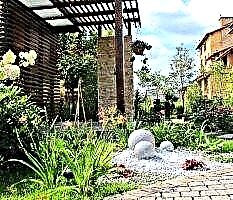
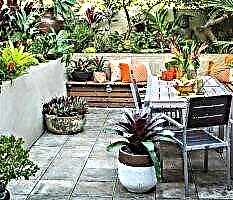
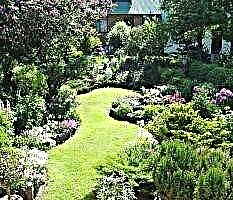

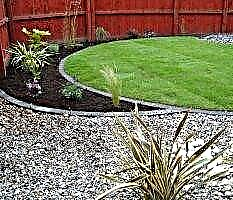
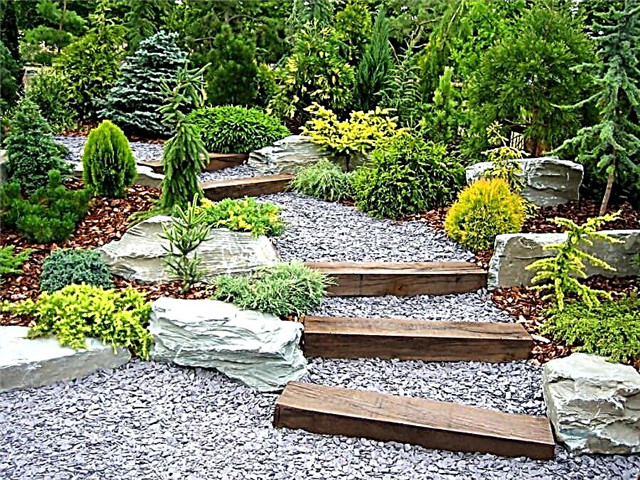

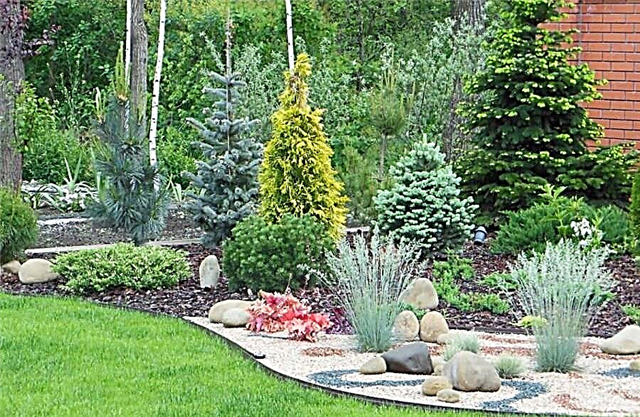
Territory zoning
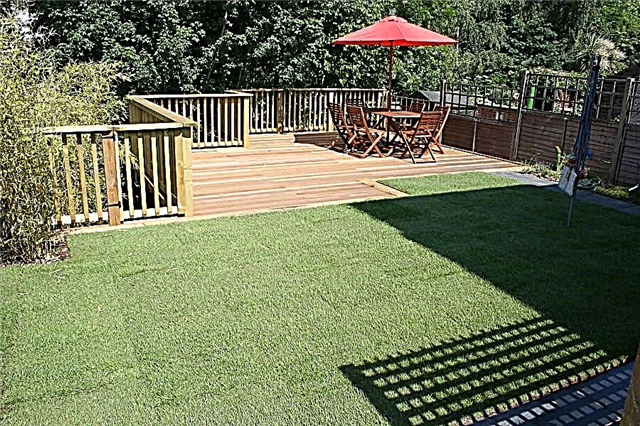
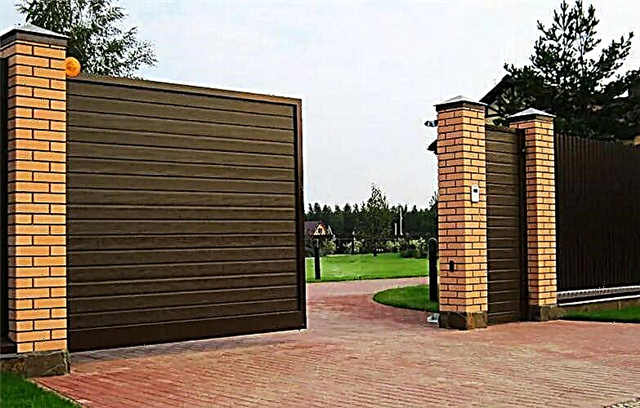
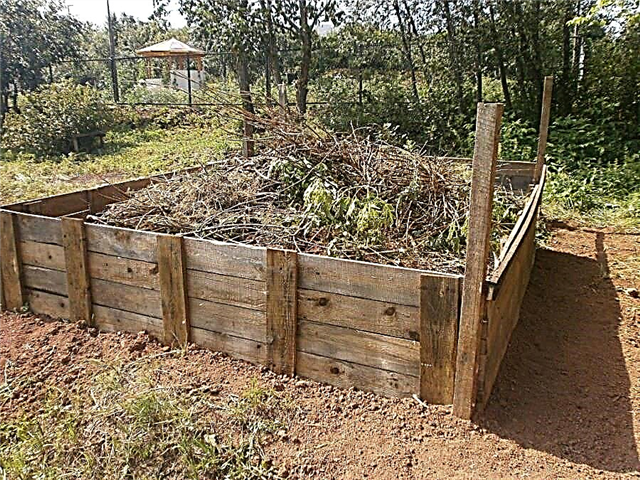
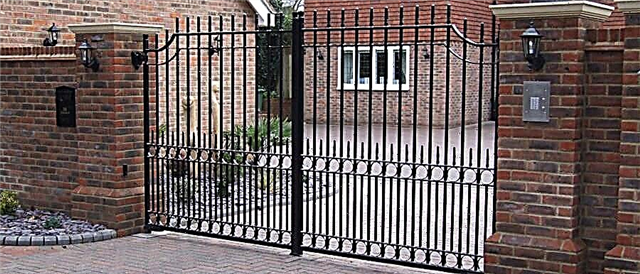
They place a residential building, as a rule, closer to the entrance, orienting the front side to the street. It is very convenient and practical to place a garage on a single house foundation.
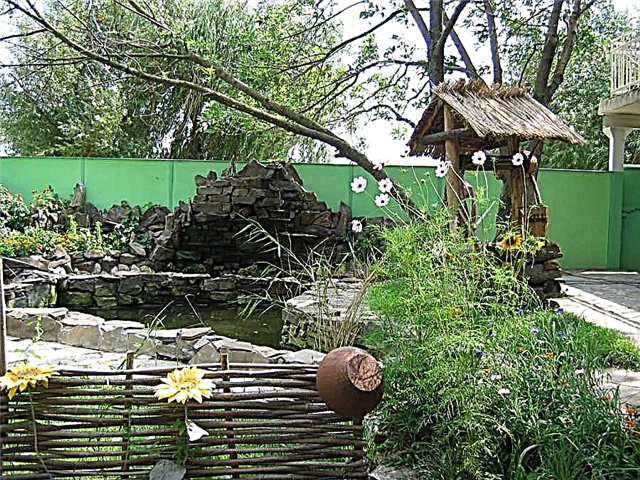
This location is convenient for several reasons:
- one foundation allows you to save valuable land plots,
- short distance to the exit gate,
- getting into the weather from the garage into the living room is much easier and cleaner.
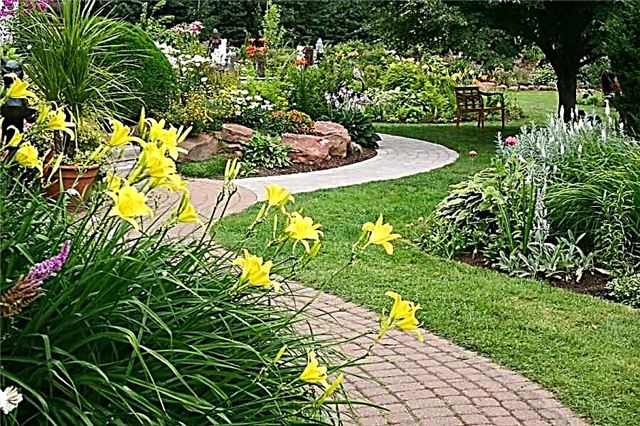
The modern design of the small plot will not do without the inclusion of household buildings. They are recommended to be located in the depths of the territory, preferably on the north or north-west side. Such placement will not create a shadow for the plants, but it will help to be saved from the cold wind.
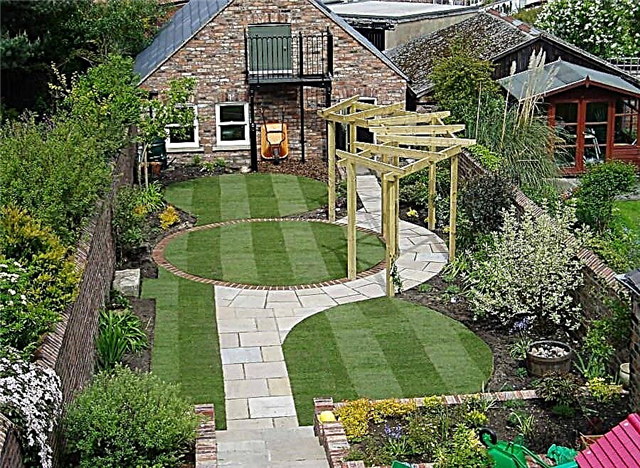
Landscaping and design techniques
In order to make a beautiful garden from an ordinary land allotment, buried in bright colors of ornamental plants and flowers, complemented by a well-kept garden, it is necessary to plan the allotment correctly using landscape design techniques.
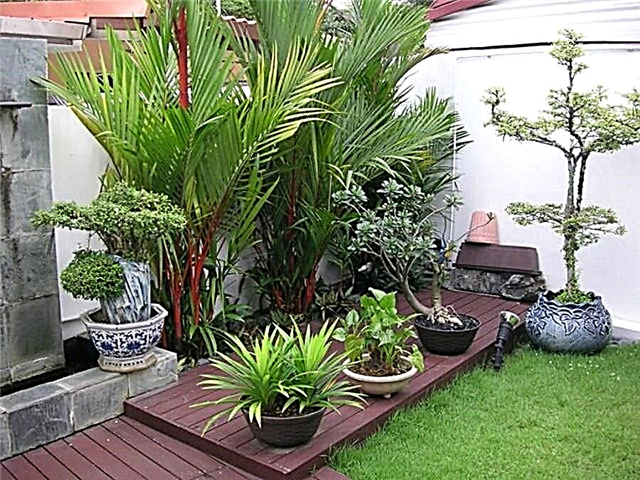
Flower Arrangements
It is best to use flower beds to decorate the site in front of the house and on both sides of the entrance. Flower compositions placed in pots and tubs that are placed on the territory look original. An excellent decoration will be a "flower brook".
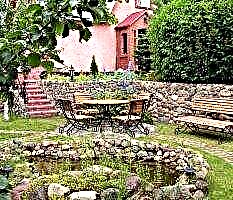
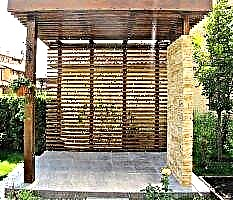
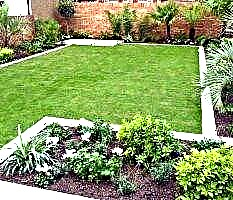
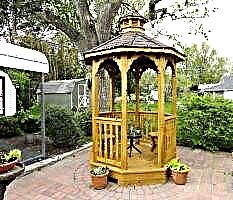
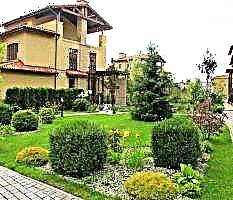
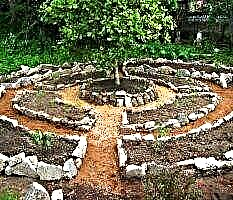
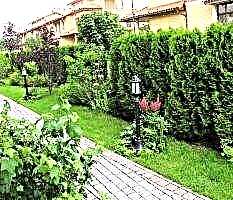
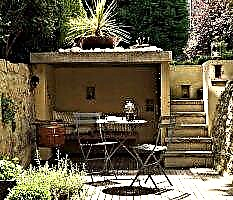
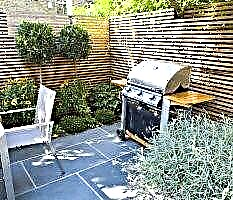
To expand the narrow area, you should resort to vertical landscaping. Climbing wall paintings that interweave the lattices of arbors will expand the boundaries.
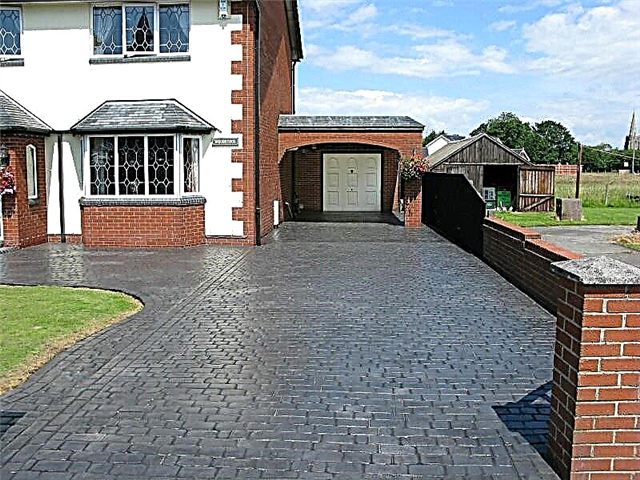
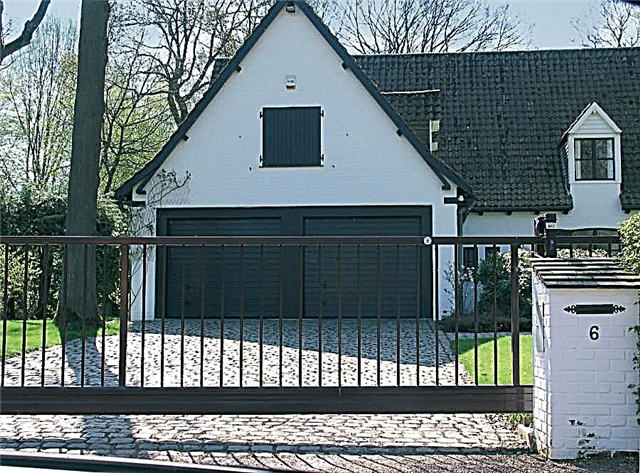
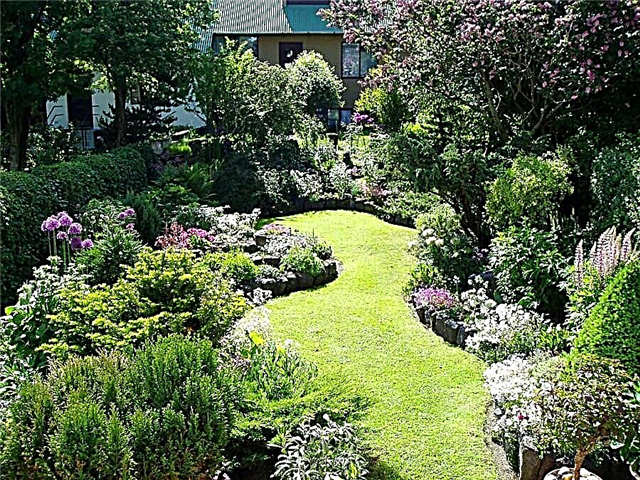
Shrub plantings
On a small area, you should not plant a lot of shrubs. Preference should only be given to those species that will "delight the eye" throughout the summer: jasmine bushes, rose hips, etc. And seedlings in the form of curly ivy, honeysuckle, honeysuckle will be a wonderful hedge.
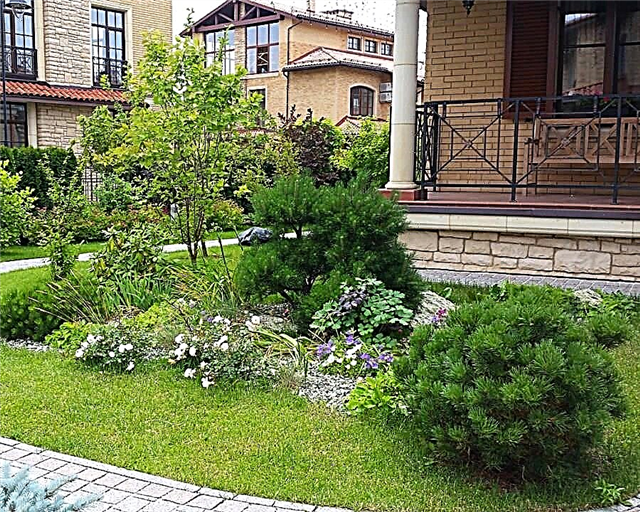
Garden beds
Photos of the design of a small plot clearly show that the design of beds with crops should be approached creatively. For garden beds, you should not give a large amount of usable area. Properly planted leaf salads and parsley or beetroot greens will become a wonderful decor decoration of the site.
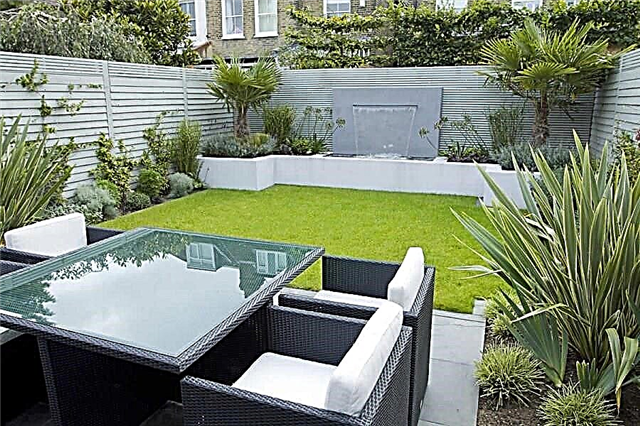
Making out the beds, it is worth taking care of decorative fences. They can be built from improvised material: stones, profiled sheets, plastic bottles, etc. Such sides will look decorative, however, they also have a practical function - they protect the stands from trampling.
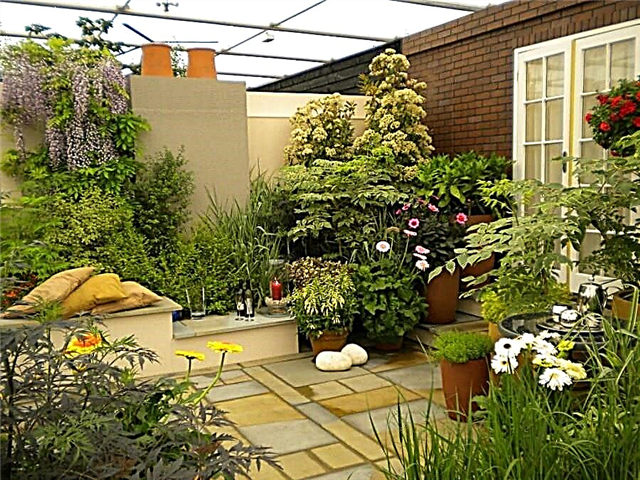
If the bed is slightly raised above the level of the general cover, then the earth on it will warm up better.
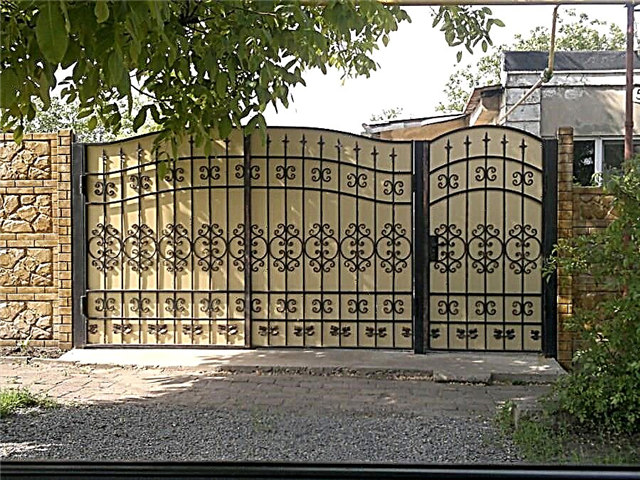
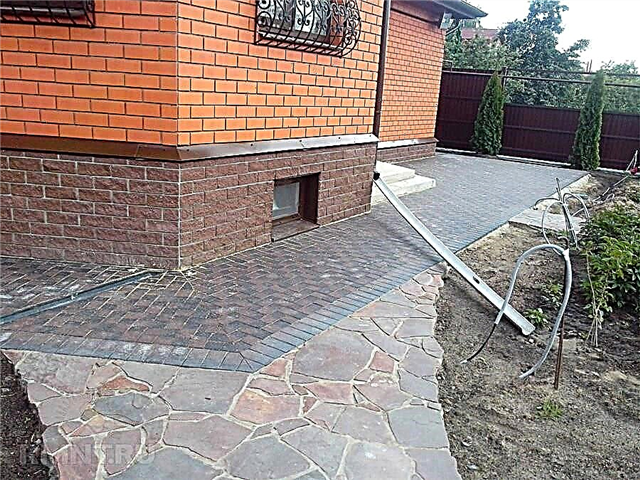
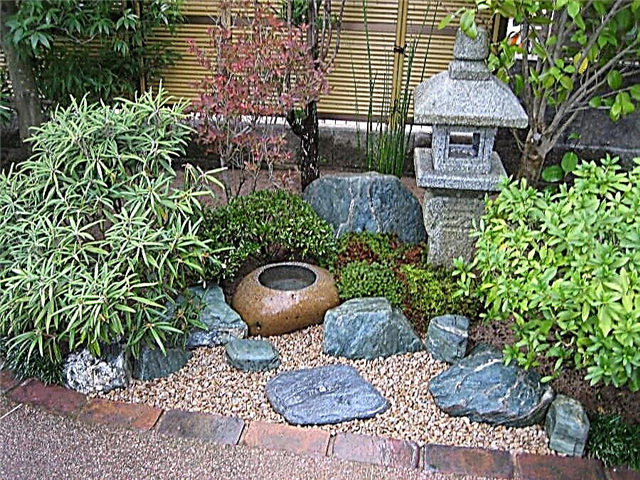
A modern method of designing beds is planting vegetables and greens along with flowers. Such compositions look charming, the main thing is to arrange the seedlings correctly in height and flowering period.
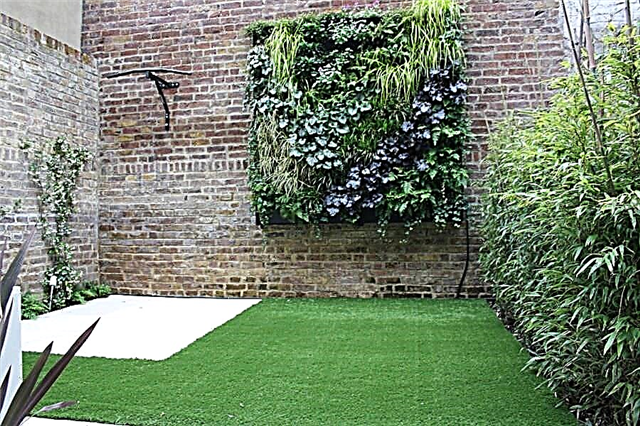
So, onion feathers will already leave the garden in August, and instead of them marigolds, marigolds, etc. will remain nearby. Such a neighborhood will be favorable for cultural plantings, because many companion flowers repel harmful insects.
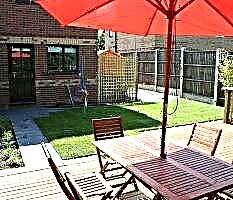
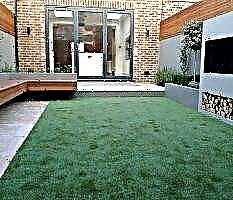
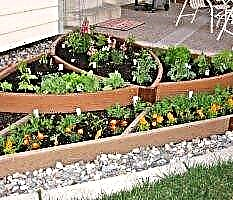
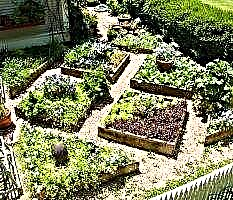
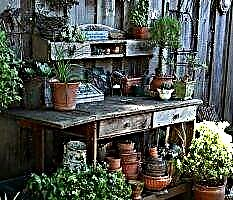
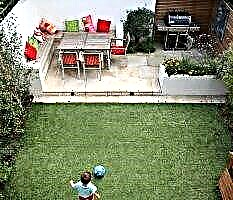

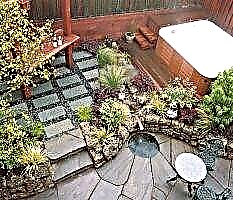
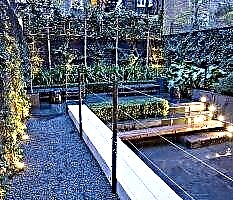
The beds in barrels look very creative, and any large containers can be used as barrels. The advantage is the ability to transfer such beds to different places.

Tracks as a technique for visual expansion of boundaries
Not a single landscape design project can do without paths. This is easily explained by the fact that it is pleasant to move around them in bad weather; they also serve as a means of visually increasing the allotment area.
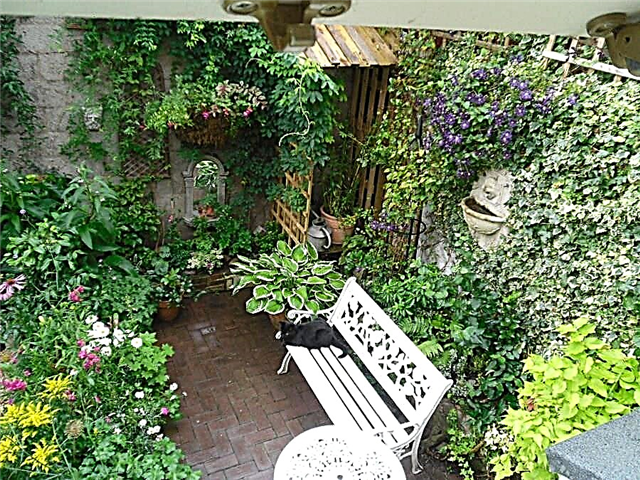
The most common materials for tracks are:
- stone elements - look rich and fundamental. Instead of expensive natural stone, you can use the remnants of facing bricks, lined with mosaics,
- wood boards or saw cuts from firewood - laying a path out of similar elements will result in a wooden path. However, it is necessary to treat every detail with rotting and damp products,
- gravel tropic will decorate a small pond,
- using a mold made of silicone, it is possible to cast a track from concrete, planting the distance between the elements of lawn grass.
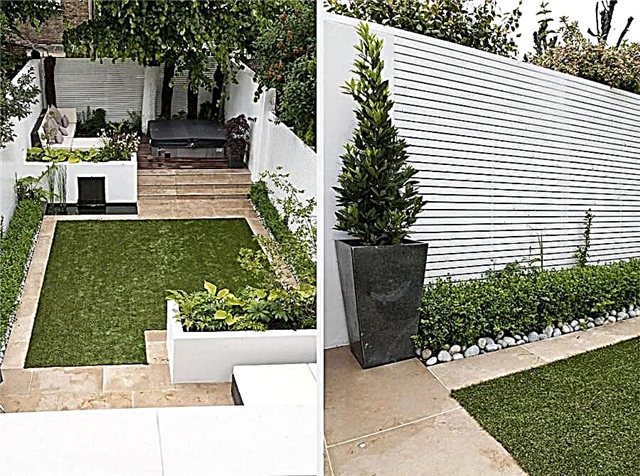
A beautifully designed land will not only please its owners, but will also be the subject of admiration for neighbors and friends.
Work rules
Designers have formulated three rules that must be followed when landscape designing a small garden:
- Abandon massive structures. All buildings should have lightness. Try to hide them behind live vertical hedges and bushes. All objects should be evenly distributed throughout the garden, so as not to create a feeling of piling up.
Household facilities should alternate with decorative corners, a gazebo, a barbecue area.
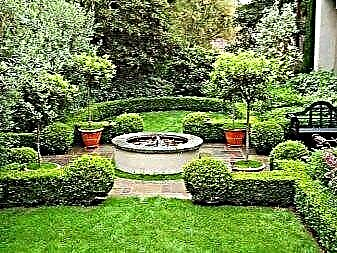

- A blank fence is not suitable for a small area. Its installation will cross out all your efforts to visually expand the space. Another disadvantage of such a fence is that it will interfere with the natural movement of air, which will lead to a change in the microclimate in the garden area. The best solution would be a fence made of mesh netting or picket fence. Climbing plants will look beautiful along the hedge.
- Tall trees are inappropriate for a small plot. Given the annual growth of their crowns and roots, you will have very little room for imagination. Plant fruit crops. They look very nice in groups.
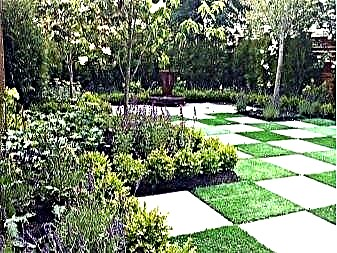
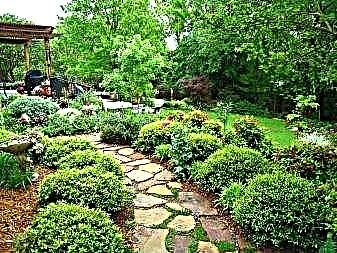
Strict proportions
The presence in the landscape of the garden plot of flowerbeds of geometric shapes, narrow paths, perfectly trimmed shrubs, trees in tubs indicates the presence of a regular style. It is a very common misconception that such a style is appropriate only for large areas.
Ready arches with curly flowers, elegant benches, garden chairs, a pond decorated with stone fencing will fit into the strict garden design.
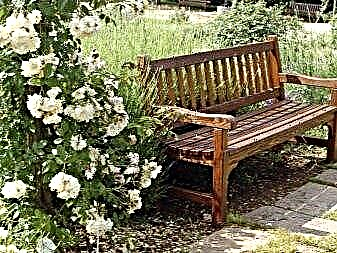
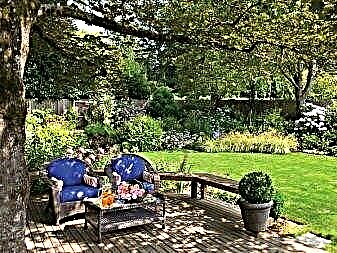
In order not to turn the territory into a pile of decorative elements that are not compatible with each other, it is better to abandon the installation of sculptures and fountains, large trees and shrubs, garden crops with a large bud diameter, multi-color design of flower beds (no more than 2 shades).
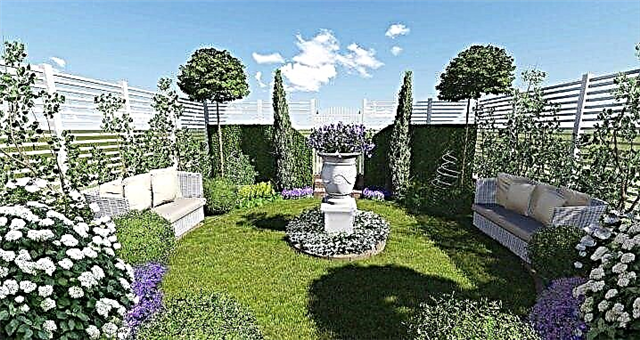
A small pond located in the central part of the plot will help simulate the wild landscape in the garden. It is not recommended to enclose the pond with large stones, so its area will visually narrow. A stepwise waterfall, a well or a “dry” stream will help to visually increase the space of the garden. An expressive accent will be creeping and hygrophilous flowers placed around the pond.
Designer finds
As decorative elements for the garden, you can use old things that are creatively rethought: car tires, old furniture, wall-mounted textile and plastic "pockets", shelves with shelves. All this can be converted into flower beds. Such beds can be used not only for flower beds, they are perfect for growing greens: ruccola, sorrel, lettuce, parsley, dill, spinach, strawberries.
Suspended structures can be located not only on the walls, but also on the ceiling. In spherical flowerpots with holes, petunia, violets, begonia, alyssum, fuchsia, and dandur look spectacular.
The lack of territory can be hidden with the help of multi-tiered terraces and vertical landscaping (rockeries, rock gardens). The best place to place them is the far corner of the garden.


For a small area, potted plants composed in multi-storey structures are suitable. If necessary, they can be moved or taken out of the garden. It is best to place potted compositions near paths, arbors or at the entrance to the house. The pot should correspond to the height of the plant and the characteristics of the development of its root system. Dwarf conifers, fragrant roses, and vegetable crops (peppers, tomatoes) grow well in pots.

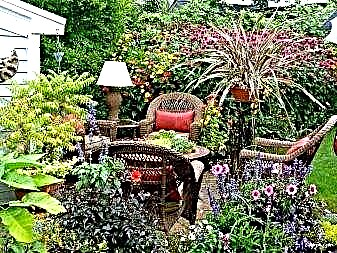
However, it is necessary to skillfully design the required number of flowerbeds and hanging compositions so that their number does not develop into bad taste.
When choosing plants, try to select varieties of flowers, the flowering of which would alternately replace each other throughout the entire warm season.
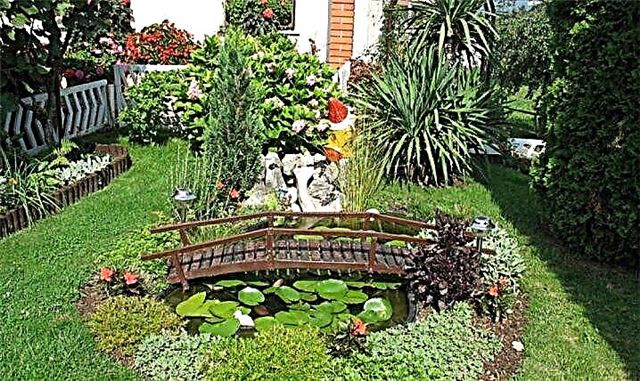
Curving paths between landings, decorative elements, smoothed shapes and lines will help expand the boundaries of the garden. Visually "push" the territory will allow white and yellow flowers planted in the most remote corners of the garden.

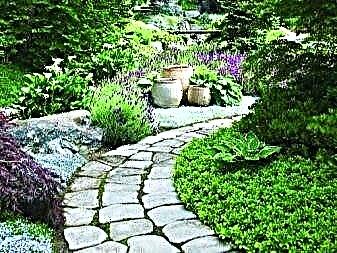
DIY design
Before you begin to design the design of your garden plot, get acquainted with examples of landscape design. Think of the options you like, you can implement on your territory. Follow these guidelines:
- study in advance the needs of the plants and trees selected for planting for lighting,
- if the soil is not fertile enough, bring chernozem to the site. Using compost and fertilizers will not bring a quick result,
- low-growing plants need to be planted in the southern part of the garden, high crops in the northeast,
- if you choose the right color scheme for the plot, you can visually expand its borders,
- To create the integrity of the picture, you must select the main tone, the shades of which can be played in different corners of the site.
When designing the landscape design of a small garden, you will have to make much more effort than when working with a large area. Not all ideas can be implemented on a small area. If you are at a standstill with the arrangement of your garden, contact the services of professionals. So the local area will be used to the maximum benefit, and most of your requests are harmoniously embodied in a small area.
The secrets and rules of landscape design for a small garden, see the next video.

